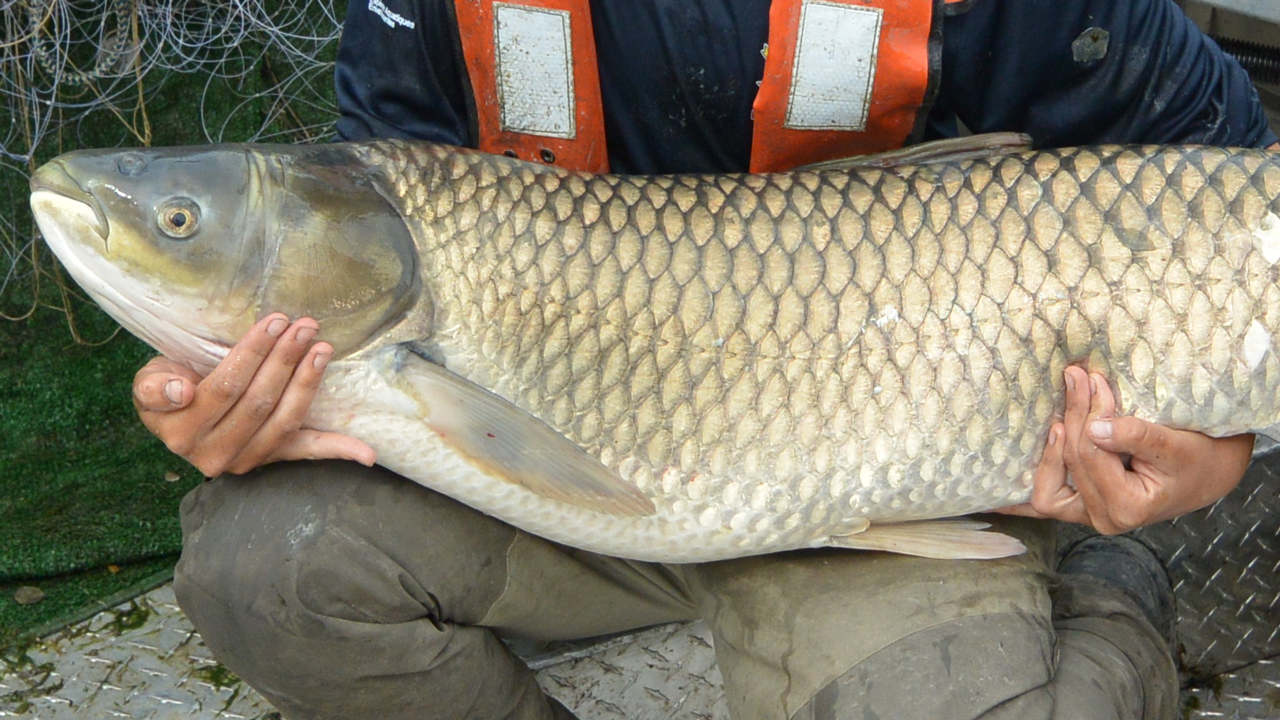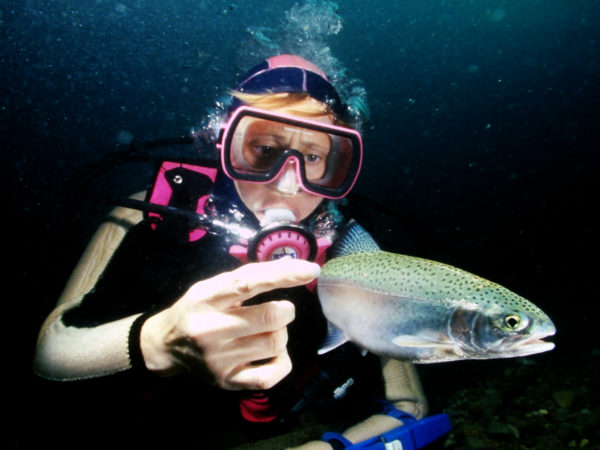
It’s what people who love the Great Lakes have feared for some time:
Asian carp – an invasive species brought into the U.S in the 1960’s to control nuisance plants – have now slithered their way in to Lake Michigan, Lake Eerie, and Lake Ontario.
But experts say let’s make it clear: it is GRASS carp,
not those huge Bighead and Silver Carp you see leaping out of the water in youtube videos. And they’ve actually been here in small numbers for more than thirty years.
The Joint Statement on the Release of the Binational Ecological Risk Assessment of Grass Carp for the Great Lakes Basin (published January 28, 2017) concludes that “the ecological consequences of Grass Carp in most areas of the Great Lakes basin could be extreme in the next 50 years.”
Great Lakes Now talked with Marc Gaden, communications director for the Great Lakes Fishery commission. He says, “On the one hand, the risk assessment is very sobering. The Grass Carp have arrived. The invasion is underway. But arrival is not the same as establishment”.
Gaden calls the report a “call to arms”, saying the report gives “very strong argument for a coordinated effort between Canadian and American jurisdictions which are critical.”
He says one of the biggest problems with Grass Carp is that, “It is voracious. It roots around in the wetlands and feeds on the aquatic vegetation fish need for spawning, and use to hide from predators.” Gaden says Grass Carp could wipe out populations of walleye, Large Mouth bass, and pike as well as waterfowl and other birds.
But it doesn’t have the leaping capabilities of the Bighead and Silver Carp, which can reach up to 100 pounds, jump out of the water as high as 10 feet, and have caused injuries to boaters where they are established in places like the Illinois River.
At first, the Asian Carp were useful in cutting back on overgrown plants in waterways. But when they escaped from controlled settings, they bred in huge numbers and apparently slipped into Lake Michigan through a Chicago area waterway before electric barriers were erected to keep fish from migrating north. The state of Illinois is now averaging the capture of about a million pounds of Asian carp each year.
Dr. Seth Herbst, Aquatic Invasive Species Coordinator for the Michigan DNR Fisheries Division, tells Great Lakes Now this new report “justifies the actions we’ve had in place over the past few years to address emerging Grass Carp concerns in Lake Erie.” He says, “The Michigan DNR has been active through partnering with commercial fisheries, other state and federal agencies and universities to implement and refine control strategies to ensure that the most effective actions are being used to control Grass Carp in the Great Lakes, particularly in Lake Eerie where the most Grass Carp have been captured.”
However, both Gaden and Herbst say the Bighead and Silver Carp are a much greater threat to the Great Lakes than the Grass Carp. Dr. Herbst says, “We can’t emphasize how important prevention is. We are supportive of increasing the number of controls in the Chicago waterway area”.
The Great Lakes Fishery Commission’s Marc Gaden says, “If there is any reason to be optimistic, it would be that establishment of Asian Carp is not inevitable, and agencies across the Great Lakes are working very hard to take steps to prevent it.”
For more information on Asian Carp in the Great Lakes go to: www.michigan.gov/
To see the complete report from The Joint Statement on the Release of the Binational Ecological Risk Assessment of Grass Carp for the Great Lakes Basin go to: www.dfo-mpo.gc.ca





